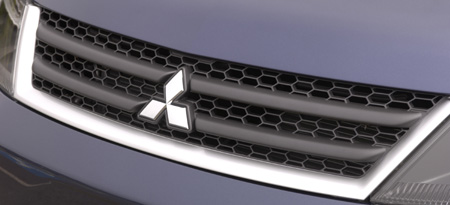
Mitsubishi has announced that it's developing a new flexible fuel vehicle for the Brazilian market that will launch in fiscal year '07. As you would expect, the vehicle (no model or classification was given) will be able to operate on ethanol, gasoline or any combination thereof. Brazil is a major market for FFVs, so Mitsubishi's announcement that they'd be starting off there is unsurprising.
What may be of interest to many of our readers is the secondary announcement that Mitsu FFVs are destined for US dealerships in FY09, so it may be worth keeping tabs on the Brazilian developments to get an idea of what the automaker has in store for us. Lancer FFV? Outlander FFV? We'll just have to wait and see.
[Source: Mitsubishi]
PRESS RELEASE:
Mitsubishi Motors to develop and launch flexible fuel vehicle (FFV)
- Brazil market FFV launch scheduled for 2007; US market models in development -
Tokyo, January 22, 2007 - Mitsubishi Motors Corporation (MMC) today announced plans to launch a flexible fuel vehicle (FFV) in the Brazil market within fiscal 2007. The Company also announced that models are in development for the US market for a fiscal 2009 launch.
One of MMC's design objectives is to create vehicles that meet the requirements of the Century of the Environment. This can be seen in the MiEV (Mitsubishi innovative electric vehicle), a next generation electric car that is a core element in the company's environmental technology strategy, and can also be seen in the next generation diesel engine that is now under development. In addition to these initiatives, MMC and its local manufacturing and sales unit, MMC Automotores do Brasil Ltda. (MMCB) have been developing a flexible fuel vehicle for the Brazil market. The FFV can run on gasoline, ethanol, or a mixture of the two, and will be launched in the Brazil market within fiscal 2007. Practical FFV solutions are also in development for the US market, where a fiscal 2009 launch is planned.
The FFV system utilizes oxygen concentration sensors to measure the concentration of oxygen in exhaust gas passing through an ordinary exhaust system. This information enables the concentration of ethanol in the fuel to be inferred, so that the amounts of fuel injected and the ignition spark timing can be optimized. As a result, the engine can handle gasoline-ethanol fuel mixtures with proportions of ethanol between 0% and 100%. The overall design achieves dynamic (engine) performance and environmental performance (fuel consumption and exhaust emissions) on a par with gasoline vehicles.


Sign in to post
Please sign in to leave a comment.
Continue